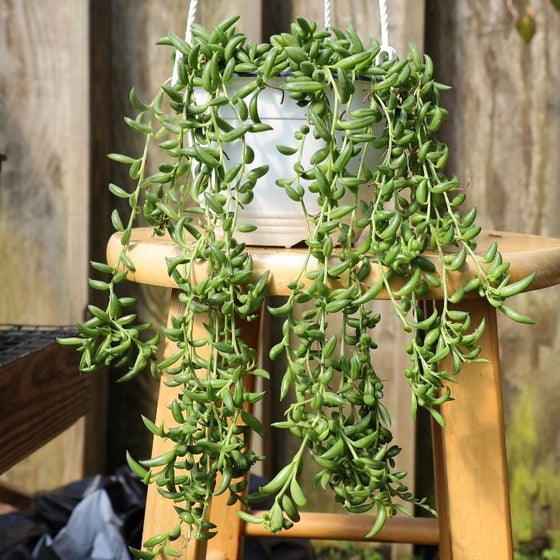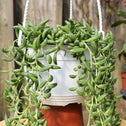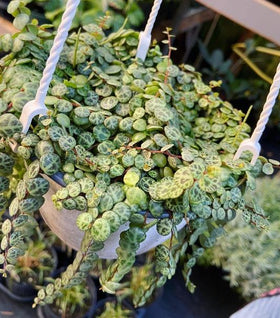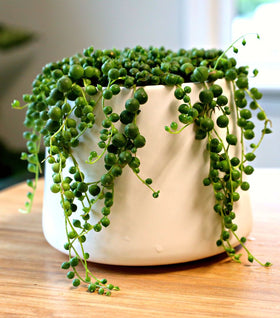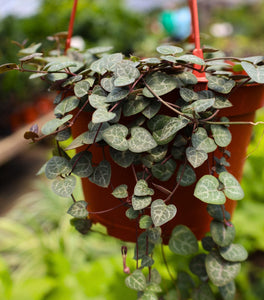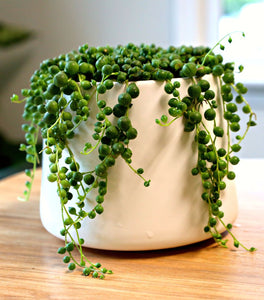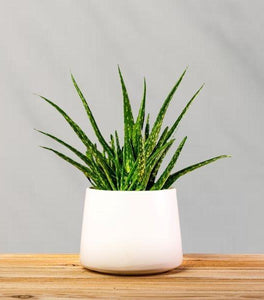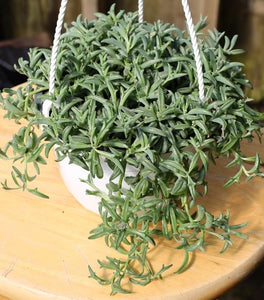Images Depict Mature Plants
The String of Bananas Plants for Sale Online
Senecio radicans, commonly known as string-of-bananas or fishhook Senecio, is a creeping succulent vine whose leaves resemble bananas. It is native to the drier parts of southwest Africa. Its stems grow along the ground in its natural environment, rooting where they touch and forming dense mats of bananas. Grows best in low light conditions. This is a fast-growing house plant.
How to Care for String of Bananas Plant
Before you buy a String of banana plant, make sure to read about the care instructions that are required and recommended to keep this plant healthy and thriving.
When should I fertilize String of Bananas Plants?
The banana shaped leaves don't need much fertilizer. We recommend fertilizing your plant during the spring and fall season to encourage optimal growth. Use an organic houseplant fertilizer or a slow release fertilizer from any local gardening store.
-v1611239427333.png?89x89)
What is the best soil for growing string of bananas plants?
This rare succulent plant enjoys well-draining soil to avoid root rotting. We recommend using an average potting soil with sand or a succulent-mix to make your plant happy! The string of bananas may rot if overwatered. Make sure to plant them in a pot that has drainage holes at the bottom and is slightly larger then the plant.
When should I water a string of banana plant?
The best way to water the string of banana is to give them a lot of water until it runs through the drainage holes at the bottom of the container. allow the soil to dry throughout watering. repeat this process once a week during the growing season. The watering schedule may have to change due to the conditions of each plant. A good rule of thumb is to allow the soil to dry 2 to 3 inches before re-watering. During the winter, allow your plant's soil to completely dry out during the dormant season.
-v1611239428171.png?89x89)
What type of light is bet for string of bananas plants?
The string of Bananas plant can be harmed if they are exposed to too much sun similar to string of pearls. Don't give them any direct sunlight when it is getting too hot. Bright, indirect light is best source of light and allow them to get at least 6 hours of morning sunlight per day.



